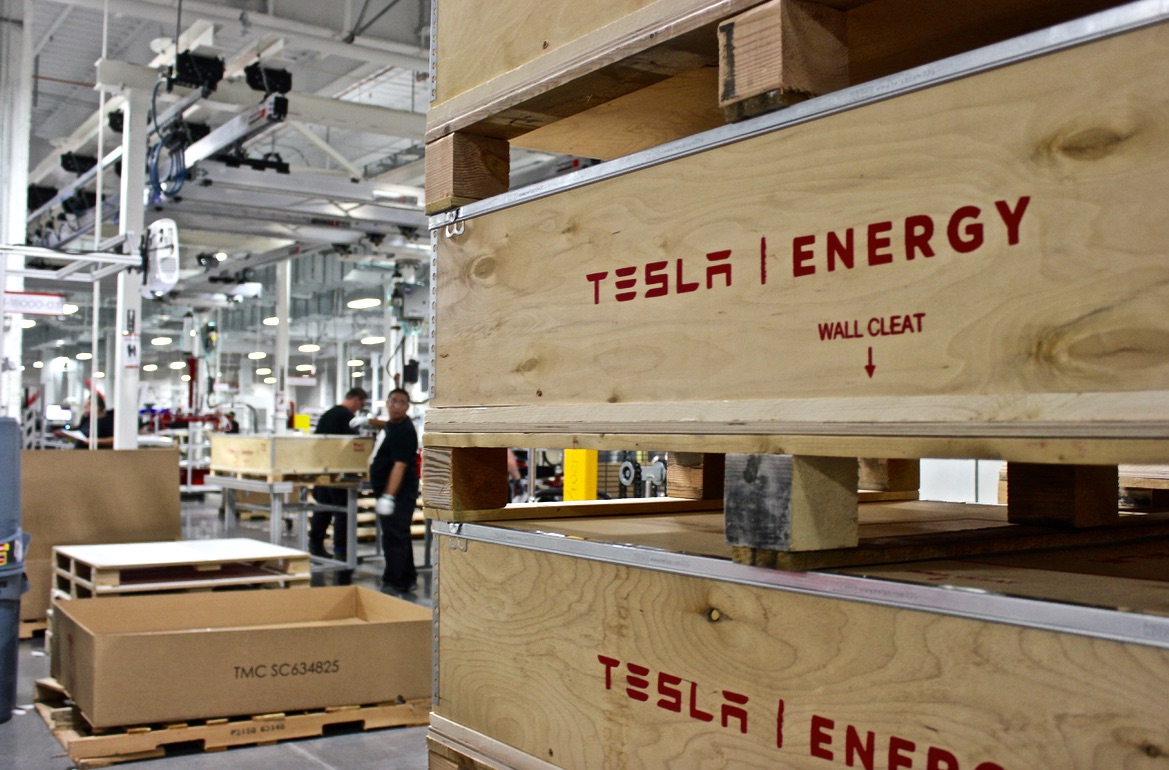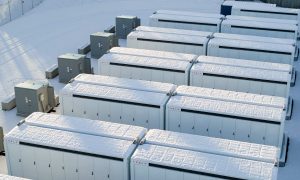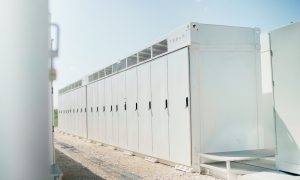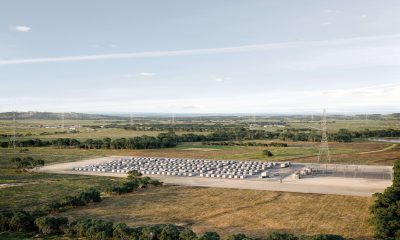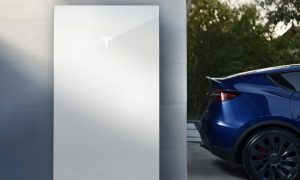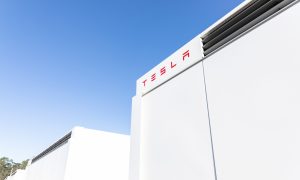News
What to expect from Tesla’s solar roof event on October 28
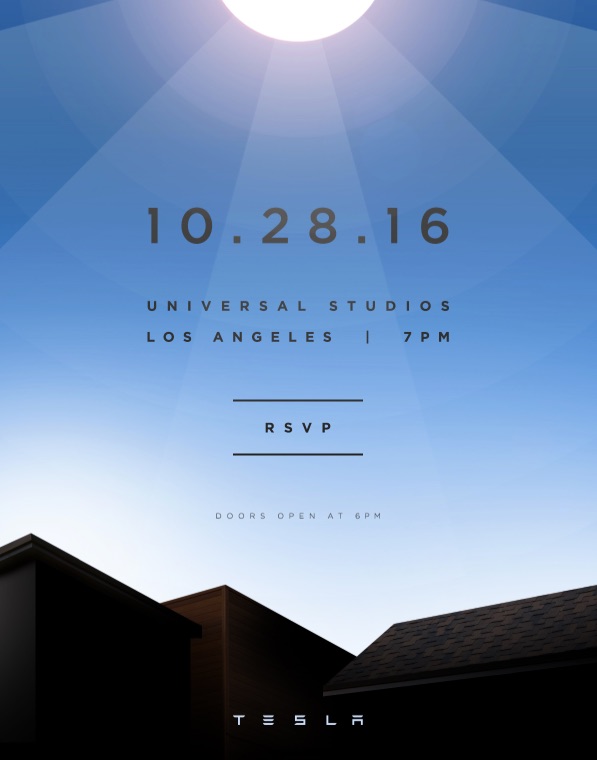
Tesla Motors, Inc. has sent invitations to a product reveal on Friday, October 28, 2016 at Universal Studios in Los Angeles. The product announcement is a formality, as Tesla CEO Elon Musk tweeted on September 22: “Aiming for Oct 28 unveil in SF Bay Area of new Tesla/SolarCity solar roof with integrated Powerwall 2.0 battery and Tesla charger.”
Tesla is in the process of buying SolarCity in a deal worth $2.6 billion. The proposed Tesla/ SolarCity merger vote goes to the shareholders on Nov. 17. Friday’s upcoming announcement offers Tesla an opportune platform as it attempts to persuade shareholders that the merger has sound financial merit. Should the two companies join into one consolidated brand, the Tesla label would prevail, according to Motley Fool, with roof systems marketed alongside vehicles and energy storage products.
How can Musk’s vision for photovoltaic units integrated into the roof itself change the industry?
Traditional rooftop solar panels are attached to roofs using metal mounting systems. But Musk’s plans for an actual roof that’s integrated with a series of solar panels is a step into a new dimension of decentralized renewable energy systems. That means that re-roofing, which is generally required about every 20 years, could migrate into a common pattern of homeowners switching to the solar roof option. While likely more expensive than a conventional roof-mounted panel, the Tesla solar roof will offer homeowners the incentives of savings in power production, endurance of the product, and overt symbolism of a sustainable lifestyle. The latter may have a profound effect on the highly-desired millennial market.
Musk has emphasized that the new solar roof product is “a fundamental part of achieving a differentiated product strategy.” The solar roof concept incorporates Tesla’s Powerwall, with 6.4 kWh storage capacity, sufficient to power most homes during the evening using electricity generated by solar panels during the day. The Powerwall can also act as a backup electrical system in the event of a power outage. Multiple batteries may be installed together for homes with greater energy needs. The upcoming Powerwall 2.0 will simplify the process of installation and feature a charger for Tesla automobiles.
A typical Powerwall system includes solar panels, an inverter for converting electricity between direct current and alternating current, a meter for measuring battery charge, and, in backup applications, a secondary circuit that powers key appliances. Each element interacts with the other.
- Panels convert sunlight into electricity that charges Powerwall and powers the home during the day.
- The home battery is charged with electricity generated by solar panels.
- The inverter converts direct current electricity from solar panels, the grid, and Powerwall into the alternating current used by a home’s lights, appliances, and devices.
A Tesla/ SolarCity partnership also has the gravitas to succeed where others have failed. Research and development around building integrated solar has been underway by various companies for years, including some systems that moved into the development stage. However, cost factors as well as inefficient electricity generation have tabled many of these efforts. Recently, Dow Chemical ceased production of its solar shingles, citing a lack of sales, according to Fortune.
Among many partnerships, Tesla is now providing batteries for Swell Energy as part of its all-in-one home management energy system. It also recently announced its pledge with Panasonic to produce solar cells at a manufacturing facility in Buffalo, New York should the Tesla/ SolarCity merger reach stockholder approval.
Already, the Tesla Powerwall unit is in demand in areas where grid reliability is an issue. Recent power outages in Australia saw demand for the Powerall increase by 30x. This newest announcement comes on the heels of an October 19 frenzy of speculation about another Tesla mystery product, which turned out to be Tesla’s autonomous driving hardware.
Tune in on October 28 to see the live product unveiling via webcast on Tesla’s website or Follow Us on @Twitter to see behind the scenes action from the event.
News
Tesla begins Robotaxi certification push in Arizona: report
Tesla seems serious about expanding its Robotaxi service to several states in the coming months.

Tesla has initiated discussions with Arizona transportation regulators to certify its driverless Robotaxi service in the state, as per a recent report from Bloomberg News. The move follows Tesla’s launch of its Robotaxi pilot program in Austin, Texas, as well as CEO Elon Musk’s recent comments about the service’s expansion in the Bay Area.
The Arizona Department of Transportation confirmed to Bloomberg that Tesla has reached out to begin the certification process for autonomous ride-sharing operations in the state. While details remain limited, the outreach suggests that Tesla is serious about expanding its driverless Robotaxi service to several territories in the coming months.
The Arizona development comes as Tesla prepares to expand its service area in Austin this weekend, as per CEO Elon Musk in a post on X. Musk also stated that Tesla is targeting the San Francisco Bay Area as its next major market, with a potential launch “in a month or two,” pending regulatory approvals.
Tesla first launched its autonomous ride-hailing program on June 22 in Austin with a small fleet of Model Y vehicles, accompanied by a Tesla employee in the passenger seat to monitor safety. While still classified as a test, Musk has said the program will expand to about 1,000 vehicles in the coming months. Tesla will later upgrade its Robotaxi fleet with the Cyercab, a two-seater that is designed without a steering wheel.
Sightings of Cybercab castings around the Giga Texas complex suggests that Tesla may be ramping the initial trial production of the self-driving two-seater. Tesla, for its part, has noted in the past that volume production of the Cybercab is expected to start sometime next year.
In California, Tesla has already applied for a transportation charter-party carrier permit from the state’s Public Utilities Commission. The company is reportedly taking a phased approach to operating in California, with the Robotaxi service starting with pre-arranged rides for employees in vehicles with safety drivers.
News
Tesla sets November 6 date for 2025 Annual Shareholder Meeting
The automaker announced the date on Thursday in a Form 8-K.

Tesla has scheduled its 2025 annual shareholder meeting for November 6, addressing investor concerns that the company was nearing a legal deadline to hold the event.
The automaker announced the date on Thursday in a Form 8-K submitted to the United States Securities and Exchange Commission (SEC). The company also listed a new proposal submission deadline of July 31 for items to be included in the proxy statement.
Tesla’s announcement followed calls from a group of 27 shareholders, including the leaders of large public pension funds, which urged Tesla’s board to formally set the meeting date, as noted in a report from The Wall Street Journal.
The group noted that under Texas law, where Tesla is now incorporated, companies must hold annual meetings within 13 months of the last one if requested by shareholders. Tesla’s previous annual shareholder meeting was held on June 13, 2024, which placed the July 13 deadline in focus.
Tesla originally stated in its 2024 annual report that it would file its proxy statement by the end of April. However, an amended filing on April 30 indicated that the Board of Directors had not yet finalized a meeting date, at least at the time.
The April filing also confirmed that Tesla’s board had formed a special committee to evaluate certain matters related to CEO Elon Musk’s compensation plan. Musk’s CEO performance award remains at the center of a lengthy legal dispute in Delaware, Tesla’s former state of incorporation.
Due to the aftermath of Musk’s legal dispute about his compensation plan in Delaware, he has not been paid for his work at Tesla for several years. Musk, for his part, has noted that he is more concerned about his voting stake in Tesla than his actual salary.
At last year’s annual meeting, TSLA shareholders voted to reapprove Elon Musk’s compensation plan and ratified Tesla’s decision to relocate its legal domicile from Delaware to Texas.
Elon Musk
Grok coming to Tesla vehicles next week “at the latest:” Elon Musk
Grok’s rollout to Tesla vehicles is expected to begin next week at the latest.

Elon Musk announced on Thursday that Grok, the large language model developed by his startup xAI, will soon be available in Tesla vehicles. Grok’s rollout to Tesla vehicles is expected to begin next week at the latest, further deepening the ties between the two Elon Musk-led companies.
Tesla–xAI synergy
Musk confirmed the news on X shortly after livestreaming the release of Grok 4, xAI’s latest large language model. “Grok is coming to Tesla vehicles very soon. Next week at the latest,” Musk wrote in a post on social media platform X.
During the livestream, Musk and several members of the xAI team highlighted several upgrades to Grok 4’s voice capabilities and performance metrics, positioning the LLM as competitive with top-tier models from OpenAI and Google.
The in-vehicle integration of Grok marks a new chapter in Tesla’s AI development. While Tesla has long relied on in-house systems for autonomous driving and energy optimization, Grok’s integration would introduce conversational AI directly into its vehicles’ user experience. This integration could potentially improve customer interaction inside Tesla vehicles.
xAI and Tesla’s collaborative footprint
Grok’s upcoming rollout to Tesla vehicles adds to a growing business relationship between Tesla and xAI. Earlier this year, Tesla disclosed that it generated $198.3 million in revenue from commercial, consulting, and support agreements with xAI, as noted in a report from Bloomberg News. A large portion of that amount, however, came from the sale of Megapack energy storage systems to the artificial intelligence startup.
In July 2023, Musk polled X users about whether Tesla should invest $5 billion in xAI. While no formal investment has been made so far, 68% of poll participants voted yes, and Musk has since stated that the idea would be discussed with Tesla’s board.
-

 Elon Musk1 week ago
Elon Musk1 week agoTesla investors will be shocked by Jim Cramer’s latest assessment
-

 Elon Musk21 hours ago
Elon Musk21 hours agoxAI launches Grok 4 with new $300/month SuperGrok Heavy subscription
-

 Elon Musk3 days ago
Elon Musk3 days agoElon Musk confirms Grok 4 launch on July 9 with livestream event
-

 News7 days ago
News7 days agoTesla Model 3 ranks as the safest new car in Europe for 2025, per Euro NCAP tests
-

 Elon Musk2 weeks ago
Elon Musk2 weeks agoA Tesla just delivered itself to a customer autonomously, Elon Musk confirms
-

 Elon Musk1 week ago
Elon Musk1 week agoxAI’s Memphis data center receives air permit despite community criticism
-

 Elon Musk2 weeks ago
Elon Musk2 weeks agoTesla’s Omead Afshar, known as Elon Musk’s right-hand man, leaves company: reports
-

 News2 weeks ago
News2 weeks agoXiaomi CEO congratulates Tesla on first FSD delivery: “We have to continue learning!”

